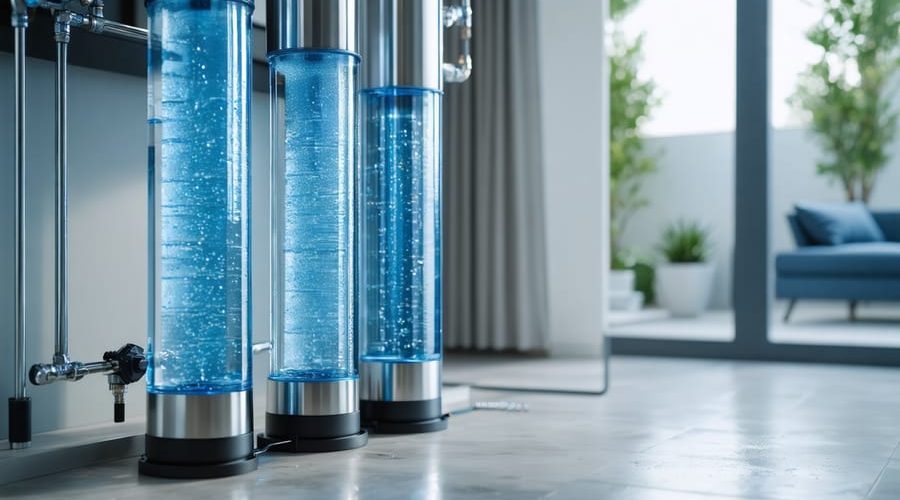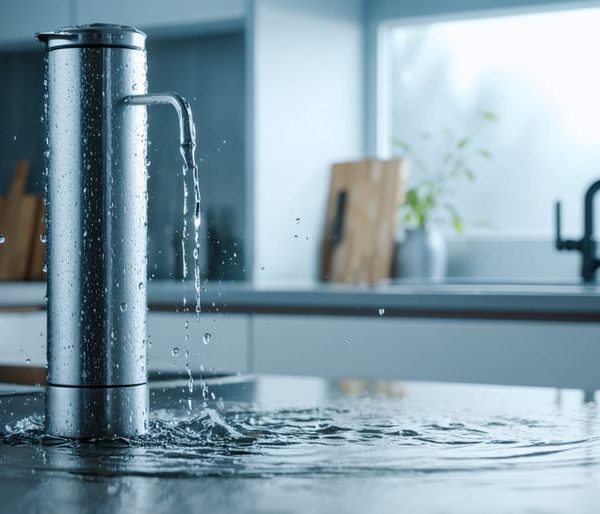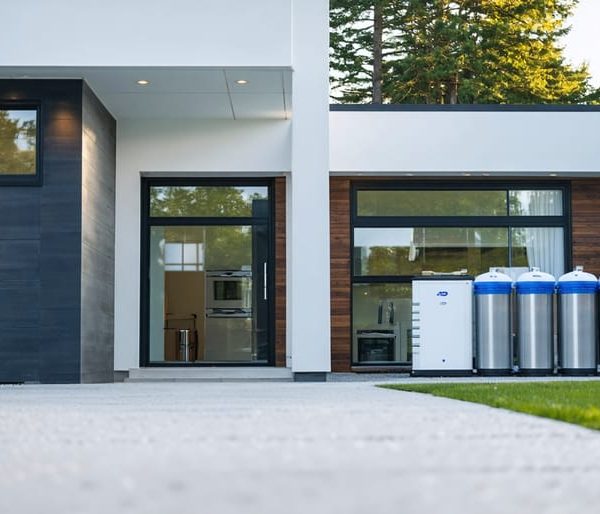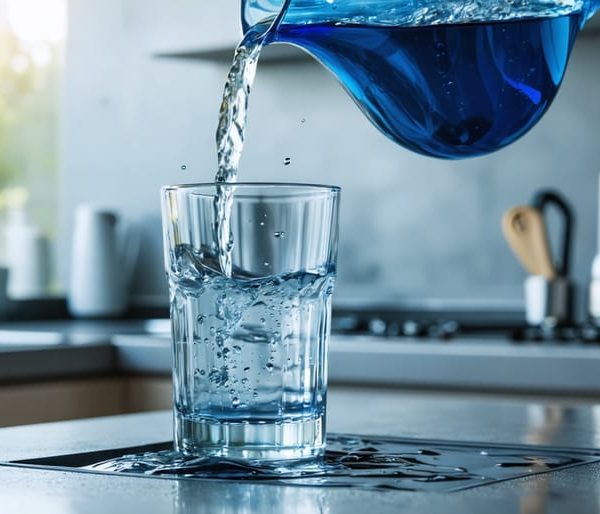Safeguard your family’s health with a UV water filtration system – nature’s most effective defense against harmful microorganisms in well water. Unlike chemical treatments, UV systems deliver clean, safe drinking water by using ultraviolet light to neutralize up to 99.99% of bacteria, viruses, and parasites. Modern best UV water purifier systems provide continuous protection without altering your water’s taste, odor, or chemical composition, making them an environmentally conscious choice for well owners.
For homeowners seeking reliable water purification, UV systems offer a perfect balance of effectiveness and simplicity. These systems require minimal maintenance, operate silently, and protect your entire household with a single installation point. With rising concerns about waterborne illnesses and increasing environmental awareness, UV filtration stands out as a sustainable, chemical-free solution that ensures your well water meets the highest safety standards while maintaining its natural mineral content.
This comprehensive guide will explore everything you need to know about selecting, installing, and maintaining a UV water filtration system for your well, helping you make an informed decision about protecting your household’s water supply.
How UV Water Filtration Protects Your Well Water
The Science Behind UV Purification
UV purification works by harnessing the power of ultraviolet light to neutralize harmful microorganisms in your well water. When water passes through the UV system, it’s exposed to a specific wavelength of UV-C light (typically 254 nanometers) that penetrates the cell walls of bacteria, viruses, and other pathogens. This light disrupts their DNA structure, preventing them from reproducing and effectively rendering them harmless.
Think of UV light as nature’s disinfectant – similar to how sunlight can kill bacteria, but much more concentrated and effective. When microorganisms are exposed to this intense UV light, their cellular functions are disrupted at a molecular level. This process is completely chemical-free and doesn’t alter your water’s taste, odor, or mineral content.
The effectiveness of UV purification depends on the clarity of your water and the intensity of the UV light. Clear water allows UV rays to penetrate more effectively, which is why UV systems often work best when paired with pre-filtration methods that remove sediment and other particles that could shield microorganisms from the light.
Benefits Over Chemical Treatment
UV water filtration offers several key advantages over traditional chemical treatment methods for well water. Unlike chlorine or other chemical treatments, UV systems don’t add any substances to your water, maintaining its natural taste and composition. This chemical-free approach eliminates concerns about harmful disinfection byproducts that can form when chemicals interact with organic matter in water.
The UV process is instantaneous, treating water as it flows through the system without requiring contact time or storage tanks. This immediate purification means you always have access to freshly treated water. Additionally, UV systems are highly effective against chlorine-resistant microorganisms like Cryptosporidium and Giardia, which traditional chemical treatments might miss.
Environmentally conscious homeowners particularly appreciate that UV treatment creates no harmful waste products and doesn’t impact local ecosystems through chemical runoff. The systems are also cost-effective in the long run, requiring only annual lamp replacement and minimal electricity usage compared to the ongoing expense of purchasing and storing chemical treatments. Moreover, UV systems eliminate the need to handle potentially dangerous chemicals, making them a safer choice for households with children or pets.
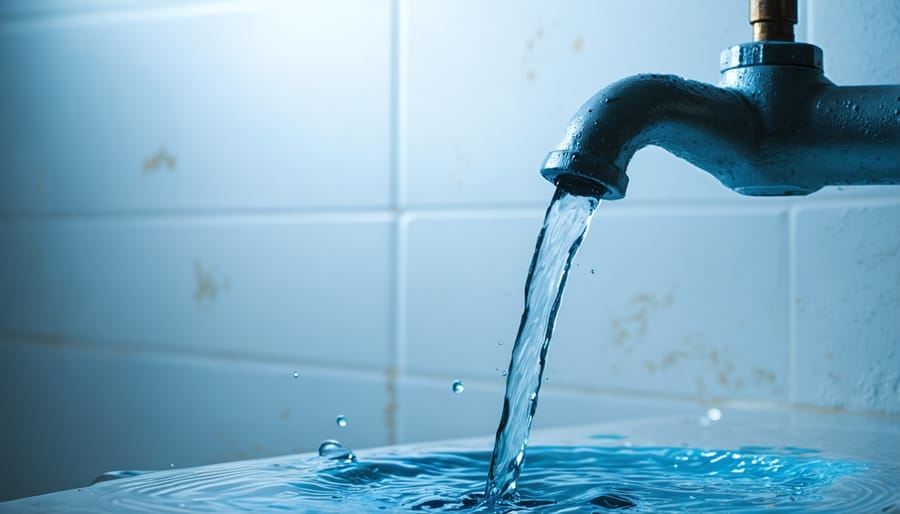
Essential Components of a UV Well Water System
UV Lamp and Chamber
At the heart of a UV water filtration system lies its two essential components: the UV lamp and the treatment chamber. These work together as part of a whole house water filtration solution to effectively neutralize harmful microorganisms in your well water.
The UV lamp, typically lasting 9-12 months, emits specific wavelengths of ultraviolet light that disrupt the DNA of bacteria, viruses, and other pathogens, rendering them harmless. The lamp is housed within a protective quartz sleeve that keeps it separate from the water while allowing UV light to pass through efficiently.
The treatment chamber, usually made of stainless steel, is designed to maximize exposure time as water flows past the UV lamp. Its reflective interior surface helps distribute UV light evenly, ensuring thorough disinfection of the water.
Regular maintenance is crucial for optimal performance. The quartz sleeve should be cleaned every 3-4 months to remove any mineral buildup that could reduce UV light transmission. The UV lamp requires annual replacement, even if it appears to be working, as its effectiveness diminishes over time. A UV intensity monitor can help track the lamp’s performance and alert you when maintenance is needed.
Remember to handle the UV lamp carefully during maintenance, as it contains mercury and can be fragile. Always wear gloves and protective eyewear when servicing the system.
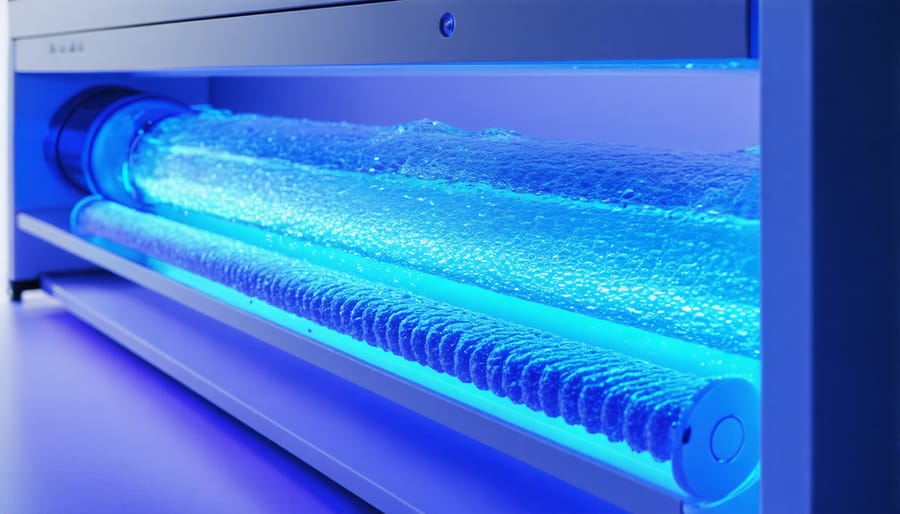
Pre-Filtration Requirements
Before installing a UV water filtration system for your well, proper pre-filtration is essential to ensure optimal performance and longevity of your system. The effectiveness of UV treatment largely depends on the clarity and quality of the water entering the UV chamber.
First, you’ll need a sediment filter to remove particles like sand, silt, and rust. These particles can create shadows that prevent UV light from reaching harmful microorganisms. A 5-micron sediment filter is typically recommended as the first line of defense.
If your well water has high iron or manganese content, you’ll need specific pre-filters to address these issues. Iron and manganese can create staining and coating problems that reduce UV effectiveness. A water test can help determine if you need these additional filters.
Water hardness should also be addressed before UV treatment. Hard water minerals can build up on the UV lamp’s quartz sleeve, reducing its effectiveness. If your water hardness exceeds 7 grains per gallon, consider installing a water softener as part of your pre-filtration setup.
Your pre-filtration system should also ensure that water clarity meets the minimum UV transmittance (UVT) requirement of 75% or higher. This means the water must be clear enough to allow UV light to penetrate effectively and neutralize microorganisms.
Regular maintenance of pre-filters is crucial for the entire system’s success. Replace filter cartridges according to manufacturer recommendations to maintain proper water quality for UV treatment.
Installation and Maintenance Made Simple
Where to Install Your UV System
The placement of your UV water filtration system plays a crucial role in its effectiveness and longevity. The ideal location is after your pressure tank and any other primary filtration systems, but before any branch lines that lead to your faucets and appliances. This ensures all water entering your home receives proper UV treatment.
Choose a covered, dry area that’s protected from the elements, typically in your basement or utility room. The space should have adequate ventilation to prevent excessive heat buildup and maintain optimal operating temperatures between 35°F and 104°F. Ensure you have easy access to a grounded electrical outlet and leave enough clearance around the unit for maintenance and lamp replacement.
For maximum effectiveness, install the UV system vertically with the lamp pointing upward. This orientation prevents air pockets and ensures consistent water flow across the UV lamp. The installation point should be at least 5 feet away from any heat sources and protected from potential water splashes or drips.
Consider installing a bypass line during setup, which allows for maintenance without completely disrupting your home’s water supply. You’ll also want to include shut-off valves before and after the unit for easier servicing. If your well water has high levels of sediment or minerals, installing a pre-filter system before the UV unit will help maintain its performance and extend the life of the UV lamp.
Remember to leave enough space above the unit – typically about 2-3 feet – to accommodate lamp replacement without having to disconnect the entire system.
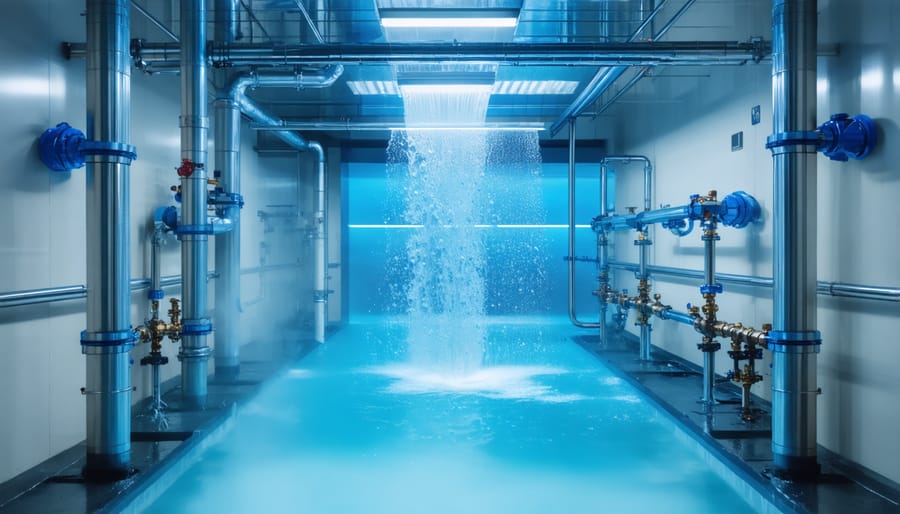
Annual Maintenance Schedule
Maintaining your UV water filtration system is crucial for ensuring safe drinking water. Following a proper filter maintenance schedule will keep your system running efficiently and extend its lifespan.
Annual Maintenance Steps:
1. Replace the UV lamp every 12 months, even if it appears to be working. The lamp’s effectiveness diminishes over time, even when it’s still illuminated.
2. Clean the quartz sleeve every 6-12 months, depending on your water quality:
– Turn off the water supply and power
– Remove the sleeve carefully
– Clean with vinegar or a non-abrasive cleaner
– Inspect for cracks or mineral buildup
– Replace if damaged
3. Replace the quartz sleeve every 24-36 months, or sooner if damaged.
4. Check and replace pre-filters:
– Sediment filters: Every 3-6 months
– Carbon filters: Every 6-12 months
– Monitor pressure gauges for signs of clogging
5. Perform quarterly system checks:
– Verify UV lamp operation
– Clean sensor window (if equipped)
– Check for leaks
– Test water quality
Remember to:
– Keep replacement parts on hand
– Document maintenance dates
– Wear gloves when handling UV components
– Never look directly at UV light
– Clean system exterior monthly
– Monitor system performance indicators
Following these maintenance guidelines ensures optimal performance and safe drinking water year-round.
Choosing the Right UV System for Your Well
Flow Rate and Usage Requirements
Calculating your household’s flow rate and water usage requirements is essential for selecting the right UV water filtration system. Start by determining your peak water demand – the maximum amount of water your household uses during high-usage periods, typically in the morning or evening.
To calculate your peak flow rate, count the number of water fixtures in your home (faucets, showers, toilets, etc.) and multiply by their typical flow rates. For example, a shower uses about 2.5 gallons per minute (GPM), while a faucet uses 1.5 GPM. Add these together to determine your total potential water demand.
For most average homes with 2-3 bathrooms, a UV system rated for 12-15 GPM is typically sufficient. However, larger households may need systems rated for 20-30 GPM. It’s better to choose a system with slightly higher capacity than your calculated needs to ensure effective treatment during peak usage.
Consider your daily water consumption as well. A typical person uses 80-100 gallons of water per day. Multiply this by the number of household members to estimate your daily requirements. This helps ensure your UV system can handle sustained usage throughout the day.
Remember that undersizing your UV system can lead to inadequate disinfection, while oversizing may result in unnecessary energy consumption. When in doubt, consult a water treatment professional for precise calculations based on your specific situation.
Water Quality Considerations
Before selecting a UV water filtration system for your well, it’s essential to understand your water’s specific characteristics. The effectiveness of UV treatment largely depends on water clarity and quality parameters. Turbidity, or cloudiness in water, can significantly impact UV system performance by blocking ultraviolet light from reaching harmful microorganisms. Iron, manganese, and hardness minerals can also create challenges, potentially requiring additional pre-filtration solutions or water treatment system combinations for optimal results.
Regular water testing is crucial to determine these parameters. Clear water with low turbidity (ideally less than 5 NTU) allows UV light to penetrate effectively and neutralize bacteria, viruses, and parasites. If your well water contains high levels of dissolved solids or minerals, consider installing pre-filtration components to address these issues before the UV treatment stage.
Color and organic matter content also affect UV system performance. Tannins and other organic compounds can absorb UV light, reducing its effectiveness against microorganisms. Additionally, pH levels should be monitored as they can influence the formation of scale on the UV lamp sleeve, potentially decreasing system efficiency over time.
Understanding these water quality factors helps ensure you select the right UV system configuration and maintain optimal performance for safe, clean drinking water.
UV water filtration systems represent an excellent investment for well owners seeking a safe, environmentally-friendly solution to water purification. By harnessing the power of ultraviolet light, these systems effectively eliminate harmful microorganisms without introducing chemicals into your water supply, ensuring both the health of your household and the environment.
The benefits of UV filtration are clear: it provides immediate protection against bacteria, viruses, and parasites while maintaining water’s natural taste and mineral content. The system’s low maintenance requirements, energy efficiency, and lack of chemical byproducts make it an environmentally responsible choice for sustainable living.
To implement a UV filtration system for your well, start by having your water tested to determine its specific characteristics and contaminant levels. Next, consult with a qualified water treatment professional who can recommend the appropriate UV system size and any pre-filtration requirements for your specific situation. Consider factors such as water flow rate, installation space, and your household’s daily water usage when selecting a system.
Remember to establish a maintenance schedule that includes annual lamp replacement and quarterly sleeve cleaning to ensure optimal performance. With proper installation and maintenance, a UV water filtration system will provide years of reliable, chemical-free water purification for your well, giving you peace of mind about your water quality while supporting your commitment to environmental stewardship.
